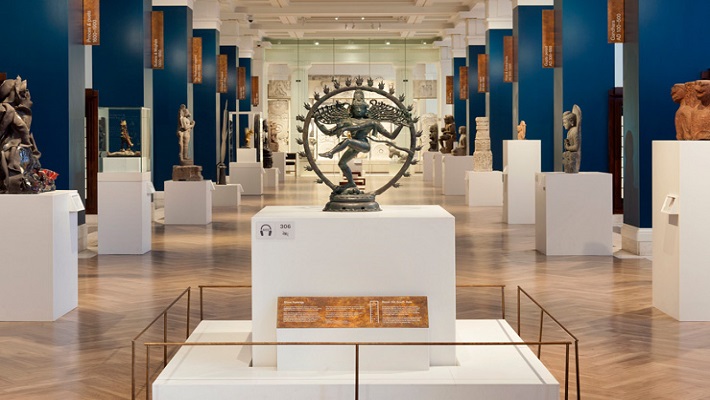
Before the British came to India, the country controlled 23 percent of global GDP. It was a country of progress, knowledge and culture. As Shashi Thoor says, “The British came to a country that was the world leader in at least three industries- textiles, steel and shipbuilding. A country that had everything, and after 200 years of exploitation, expropriation and outright looting, this country was reduced to one of the poorest countries in the world by the time the British left in 1947”.
It is estimated that Britain has drained near about $45 trillion from India during the period 1765 to 1938,. In fact, India was that engine that runned industrialization of Britain, and developed the nation that we see today. Wealth was not all that the British were after, the country also managed to rob India’s precious artefacts, gems, natural resources, and possibly everything. Koh-i-Noor on the top of the British crown still remains a scarr of the dark colonial Raj.
As rightly pointed out by Anuraag Saxena, founder of the India Pride Project (IPP), “You took our lives. You took our natural resources. You took our heritage. You can't give back our lives and natural resources. At least give back our heritage.” Human rights treaties have also supported these claims by endorsing a “right to culture” while a UN Declaration on the Right of indegenious People grants return of property "taken without their free, prior and informed consent."
Till now multiple urges and requests have been made to the british museums, with minimum outcome. The museums, on the other hand, have a funny story to tell. They believe they should be allowed to keep "the spoils of war" despite the fact that international law has now rejected this notion, or else they should adhere to the "finders keepers" schoolyard maxim no matter how irrational the ruling.
Although the Kingdom has crumbled, their sense of entitlement has not. It's now time that the nation set away its colonial mindset and return what we owe them.
Koh-i-Noor "Mountain of Light"
The 21.6 grams of the 105.6 metric carat diamond. Koh-i-Noor, which was mined in Kollur Mine in the current state of Andhra Pradesh, belonged to the Peacock Throne of Mughal Emperors. Its uncut original carat weight was 793. The Mountain of Light is the moniker given to it by diamond specialists worldwide.
After the British established the East India Company in India in 1849, Queen Victoria received control of it. The Koh-i-Noor diamond was remodelled in 1852, and Queen Victoria frequently wore it on various occasions. Currently, it is kept at the Tower of London's Jewel House. The Mughal monarchs retained the Kohinoor, one of the oldest and most renowned diamonds in the world.
The Ring of Tipu Sultan
When Tipu Sultan, a ruler of Mysore also known as Tiger of Mysore lost a battle to the British in 1799, the colonists stole his sword and ring from his body. The sword was returned to India, but in 2014 the ring was auctioned by the British for £145,000. The 41.2g ring was sold to an undisclosed bidder for almost 10 times its estimated price at the auction in central London, according to Christie's website. The jewelled ring is inscribed with the name of Hindu God Ram in raised Devanagari inscribed on it.
The Sultanganj Buddha
The Sultanganj Buddha is a depiction of Siddhartha Gautama and dates back to the 7th century. The metal statue is over two metres tall and weighs around 500 kg. In 1861, British railway engineer EB Harris discovered the statue while working on the Indian Railway in Sultanganj. The statue was shipped to Birmingham’s collection in 1864 and now displayed alongside other Asian sculpture in the Birmingham Museum and Art Gallery. The statue has been rechristened the Birmingham Buddha. The Archaeological Survey of India (ASI) is putting their efforts to bring the statue back to India.
The Amravati Marbles
The Amaravati Marbles also called Amaravati Collection is a series of 120 sculptures and inscriptions from the Amaravati in Andhra Pradesh. The sculptures and inscriptions were discovered in the 1800s on the bank of river Krishna. Soon the artifacts were taken to the British Museum. The Archaeological Survey of India (ASI) along with UNESCO is taking efforts to bring the marbles back to India as they belong to Amravati Stupa of Andhra Pradesh. The sculptures are also called the Elliot Marbles because of its association with Sir Walter Elliot.
Lesson To Learn
The museums must know that artefacts should belong to the places where they can best be appreciated, to the people whom it matters the most. For Britain, they must give place to the products that their land has produced, instead of the artefacts that showcase the mournful days of colonial past.







